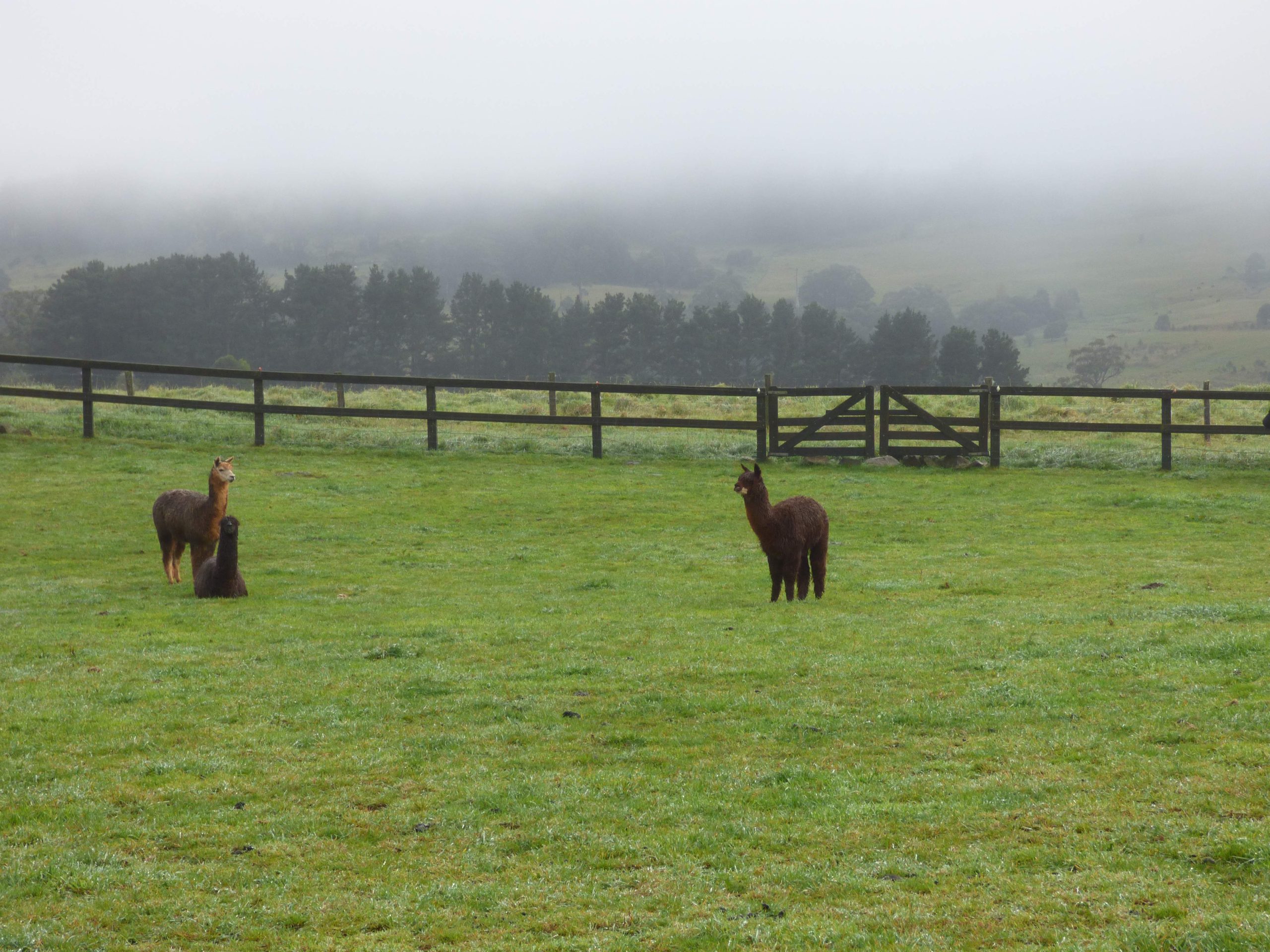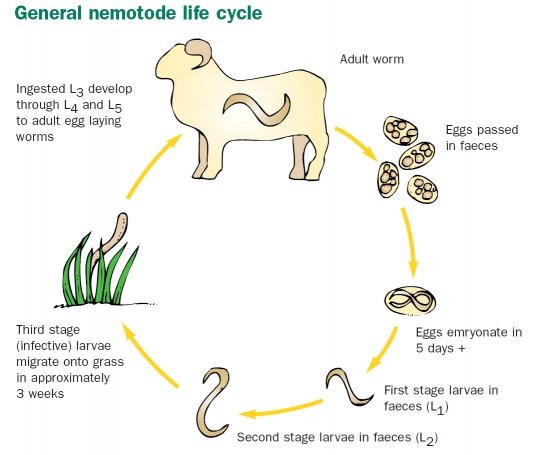Nematode Life Cycle
General Nematode Life Cycle
 Nematodes have three main life-cycle stages: eggs, larvae and adults. Adult worms infect definitive hosts (those animals in which sexual development of the worm occurs) whereas larval stages may also be free-living or parasitise intermediate hosts or invertebrate vectors.
Nematodes have three main life-cycle stages: eggs, larvae and adults. Adult worms infect definitive hosts (those animals in which sexual development of the worm occurs) whereas larval stages may also be free-living or parasitise intermediate hosts or invertebrate vectors.
Adult female nematodes lay eggs which are passed in faeces onto the pasture. The eggs hatch, producing the first larval stage (L1) that then undergoes several (often 4) metamorphoses (moults) to L2, L3 and L4 (immature adults). The final moult releases the immature adult which then matures to an adult worm. Male or female adults mate and the female produces eggs, completing the cycle. L1 and L2 usually remain in the faeces, feeding on bacteria. L3 do not feed, surviving on energy reserves. They move in water films on pasture. The L3 is the infective stage which must be consumed by the host animal for the life cycle to continue. Later moults occur within the host.
Some of the nematode species that infect horses, ruminants and alpacas, most notably, the small strongyles (horses), Ostertagia spp. (cattle), Haemonchus contortus (sheep, goats, alpacas) and Trichostrongylus axei (sheep, goats, alpacas) (and there have also been reports for Teladorsagia circumcincta (sheep, goats, alpacas)) can undergo seasonally arrested development (hypobiosis) at the early L4 stage. The factors that cause this are not completely known, but hypobiosis is believed to be a survival mechanism whereby egg laying is delayed until after winter, thus avoiding adverse weather conditions for the eggs and early stage larvae on the pasture. This can result in the mass emergence of large numbers of larvae from the hypobiotic state. This occurs in Type II ostertagiosis which is mainly seen in beef cattle up to 2 years of age. Type II ostertagiosis contrasts with Type I ostertagiosis, which results from recent infection where there is no delay in development to the adult stage, and which is mainly seen in dairy calves during their first grazing season.

